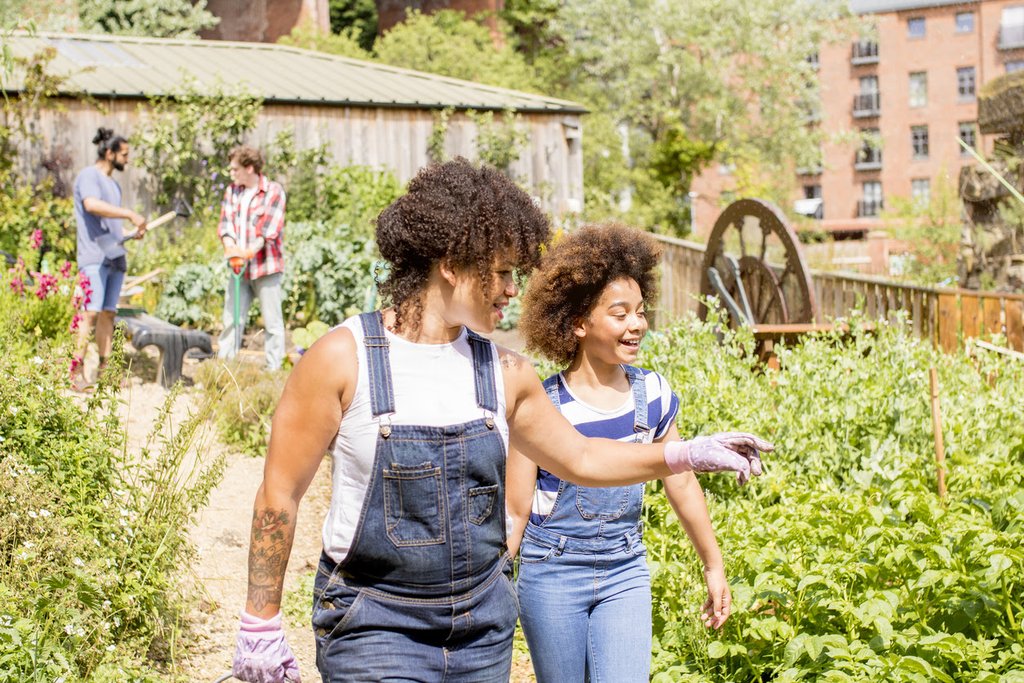Looking for a new challenge beyond micro gardening? Does your neighborhood need a community garden? Not only can community gardens bring people together in a fun and safe space, but, depending on what you plant, they attract positive insects and can even provide fresh and organic vegetables.
Not convinced? Imagine this. Let’s say that you’re feeling bored on a day off of work. Why not walk down to your community garden with your children or by yourself to plant some flowers or vegetables and to get fresh air and sunlight? It’s the ultimate version of locally-sourced foods, too.
Sounds pretty fun! So, let’s get started. There are quite a few ways to go about starting a community garden.
Basically, you need to get the land approved (don’t plant on anybody’s property!); you might want to start a gardening club (three isn’t a crowd when you’re building something useful and enjoyable); and then start planting.
It seems pretty simple. In a way, it is. But, as with every project, you need to put a bit of time and effort into your garden. I’ll offer you some advice.
The more intricate version of the original plan, according to the American Community Gardening Association, is as follows:
- Organizing a meeting of interested people
- Form a planning committee
- Identify all your resources
- Approach a sponsor
- Choose a site
- Prepare and develop the site
- Decide which herbs you want to include
- Organize the garden
- Plan for children
- Determine rules and put them in writing
- Help members keep in touch with each other
You can see the full list, as well as more information from the ACGA on their page, after searching for: “10 Steps to Starting a Community Garden.”
Phew! That’s more work than you probably expected. If you’re still devoted to doing this, then read on and find out further information.
In order to organize a group of interested people, you might want to check with neighbors. Let them know what you’re doing and why you think that starting a community garden is important. Don’t go off on a tangent about how tomatoes that have not been treated with pesticides are better than those that have. I assure you, that’s the quickest way to make someone shut the door in your face. If you’re still struggling, Rodale’s Organic Life states that “if you want to start a community garden where you live, get in touch with the American Community Gardening Association, a national organization of gardening an open space volunteers and professionals. It offers programs and support for community garden volunteers” (rodalesorganiclife).
Once you have your committee, start giving people responsibilities. Perhaps you want to make a schedule. If you’re having a dry spell, make sure that someone is out at the garden, watering every day until it rains. You could assign various plants or vegetables to different people and make sure that everything gets planted. It’s up to you what you want your committee to do! This was your idea, after all! Just be fair and treat everyone respectfully.
As soon as you finish that step, it’s time to purchase things! (This is probably the worst step. Don’t worry—it’ll be over soon.) Figure out what sort of a garden you want. Do you want flowers? Vegetables? Decide that, and then head to the store! Get your equipment while you’re at it.
Approaching a sponsor is optional. The ACGA says that “some gardens ‘self-support’ through membership dues, but for many, a sponsor is essential for donations of tools, seeds or money. Churches, schools, private businesses, or parks and recreation departments are all possible supporters. One garden raised money by selling ‘square inches’ at $5 each to hundreds of sponsors”. Once again, it’s up to you and your personal preferences, although this is something that you probably want to discuss with your team.
After you figure out whether or not you want a sponsor, decide on a plot of land. I recommend one that is in full sunlight and has fertile dirt, as you probably already know. But, again, it depends on what you’re trying to grow. Make sure that you have the money to feasibly pay for the land, unless you can get it donated, and then mark your plot!
Preparing and developing the site, and then organizing the garden, all fall under the same category. This is the step where you prep the land for sowing and figure out what goes where. Refer to your team and keep thorough notes.
Consider creating a special garden just for kids. The ACGA says, “…including them is essential. Children are not as interested in the size of the harvest but rather in the process of gardening. A separate area set aside for them allows them to explore the garden at their own speed.”
Creating rules means making sure that the people in your committee know for what they are responsible. Writing things down can prevent someone forgetting that it is his or her day to water the plants. Make a schedule. Assign different tools to people so that they don’t have to share.
Finally, help members to stay in touch! With the advances of social media, you can create an email list, a Facebook group, or a Facebook group chat, as well as many other things. Make this a place for people to ask questions and plan parties and be celebrated for their hard work. Encourage your members to treat each other courteously. You’re all interested in the same thing! Do what you started the garden for and be a community!









